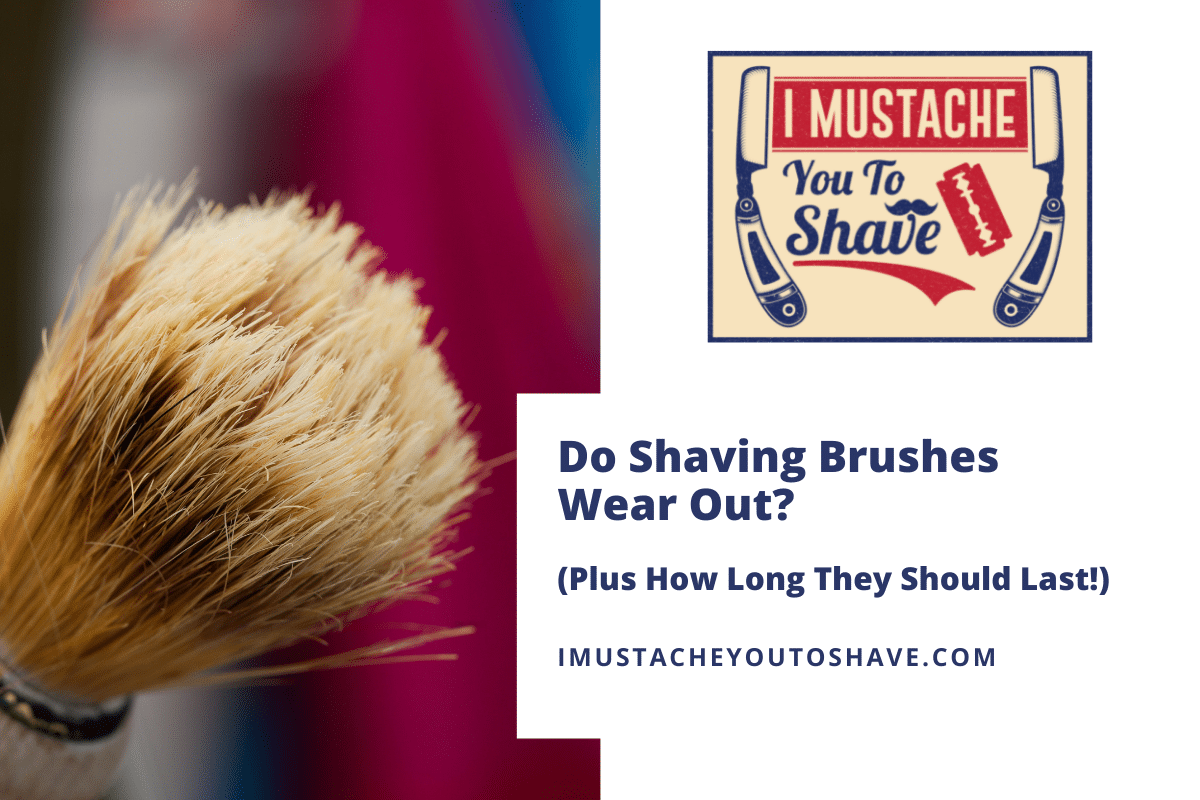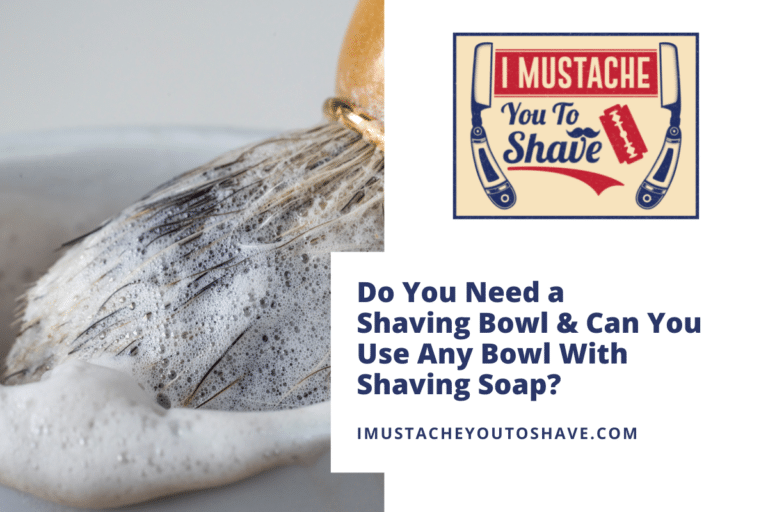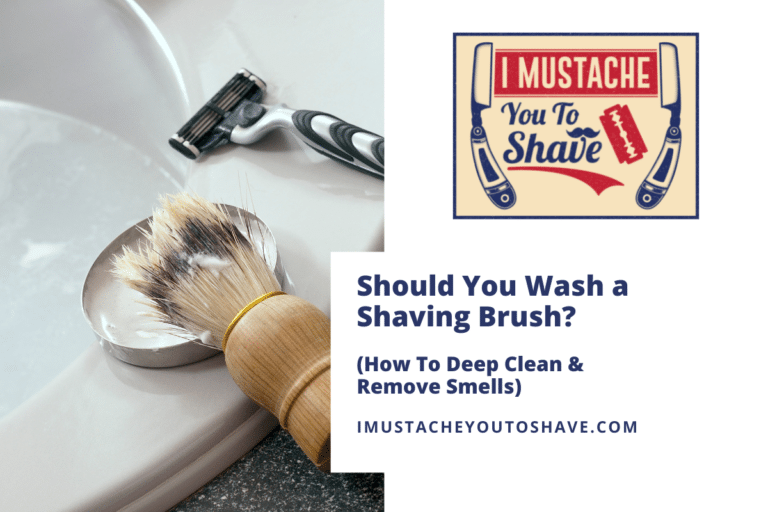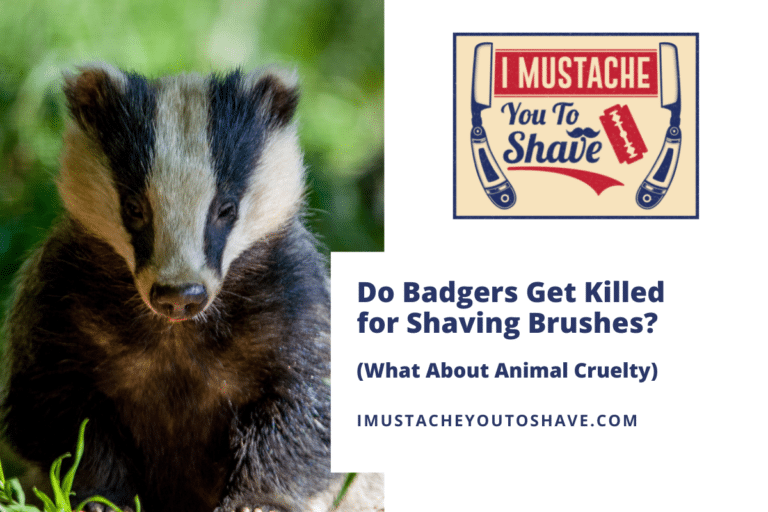Do Shaving Brushes Wear Out? (Plus How Long They Should Last!)
Maybe you are shopping for a new brush or simply considering your current model. Before making an investment a moment should be taken to understand the potential lifespan of a shaving brush.
A shaving brush can last 10 years or more with proper care. Natural hair brushes, such a badger brushes, can last 10-15 years. Synthetic bristle brushes tend to last longer because they dry more quickly and do not retain water after use. To extend the life of your brush, dry it after each use and store it suspended in the open air when not in use.
Read on to learn about shaving brush lifespans and how to prolong them.
Will shaving brushes wear out eventually?
Brush breakdown and longevity should be considered before investing in a new brush.
Natural and synthetic fibers eventually wear out even with proper use and care. They bend, break, and shorten with pressure over the course of several years. The lifespan of a brush is even shorter when used too aggressively.
Have you ever watched a fencing match? The foil, a flexible dueling sword, bends a bit when the swordsman scores a touch (or touché). The sword is designed to be flexible enough to bend but rigid enough to parry another sword. Were the tip of the foil to be sharpened then the bend in the sword would be enough to penetrate, but the bend is how judges would score hit before electronic sensors were introduced.
Shaving brush bristles must demonstrate similar properties to fencing foils. The bristles should flex enough to whisk air into soap in order to lather it and should also be strong enough to hold the lather. When the brush meets the skin, it should be able to lift whiskers and exfoliate without scouring or irritating the skin.
What causes a shaving brush to wear out?
There are several contributing factors in brush breakdown.
Pressure is the most common enemy to shaving bristles. This comes from the force applied when whipping a lather, applying soap to the face, or wringing the bush out which is a huge mistake. Even with light pressure, using a brush frequently will take its toll.
Hard or soft water and water temperature can eventually ruin brushes. Mineral deposits buildup within the space between bristles and very hot water will break down adhesives.
Shaving soap will help keep the brush nourished but some canned creams or gels may offer no lasting benefits. The natural oils in animal fiber bristles could be stripped and, without proper rejuvenation, could lead to damage.
When should you replace your shaving brush?
There are ways to tell when your brush has lost a step.
Some of the signs that your brush is at the end of its days are simple to spot. Any mold is a sure sign it’s time to replace the brush. A few loose bristles are nothing to worry about but when a substantial amount falls while lathering then a new brush is likely necessary.
Sometimes a brush just feels like it has lost its structure. If it feels too flimsy or loses strength under the weight of the soap, it is time to go shopping.
How long do shaving brushes last?
There are quite a number of contributing factors to brush breakdown.
A shaving brush can last 10 years or more with proper care. Bristles break or bend and glue breaks down over time. Brushes can also harbor mold or simply lose their backbone. Synthetic bristles do not break down the same way as natural fibers.
Brushes are made with a variety of fibers to include but not limited to:
Synthetic
Synthetic bristles are commonly constructed of plastic or nylon and will last much longer than natural fibers. Great progress has been made within synthetic brushes and some even rival badger brushes.
Being rather homogeneous in composition, synthetic brushes tend not to hold water the same as natural brushes which means they can dry quickly when stored but will not hold a lather with the same efficiency. Some synthetic bristles are crimped as a means to hold moisture.
The same considerations should be made in terms of the frequency of use and also the quality of the brush. Aggressive pressure will eventually take its toll but with proper maintenance, a synthetic brush could potentially last several decades if not indefinitely.
Badger
Badger hair is sourced from the neck of badgers and comes in a variety of qualities. The quality, ideally, is determined by if 100% hair from the neck or blend from other parts.
The manufacturing, by either machine or by hand, will also affect the quality of the brush’s effectiveness as handmade brushes endure longer than those that are machine-produced. The quality of the brush will be the first indication of longevity.
Badger brushes can last 10-15 years or longer.
Other animal hair brushes
Boar and horse are common natural alternatives to badger hair but sometimes goat, camel, and raccoon may be found. Makeup brushes more commonly use softer hair such as rabbit or sable.
The composition of the brush can be a blend of two or more styles of hair in order to mimic the softness, water retention, and backbone of natural badger. Guard hair is most commonly used in shaving brushes. Underfur, like your pet’s dander, does not have enough backbone to create or support a lather.
Boar and horse brushes require a break-in period and sometimes a pre-shave soak. Boar bristles begin to split which causes the brush to soften after a few shaves. Horse hair, from either the mane or tail, tends to be the middle ground between boar and badger.
Boar brushes have been known to last several decades.
How do you maintain a shaving brush?
Proper maintenance is key to keeping your brush going for the duration.
Proper brush maintenance includes deep cleaning, drying, and storage. Storing a wet or damp brush can potentially lead to a build-up of mold.
The keys to shaving brush care and maintenance are:
- Deep cleaning
- Breaking in
- Drying
- Storing
- Rotating or alternating brushes
Deep cleaning
Keep in mind that you should always have a routine to clean your shaving brush. If the brush is new from the factory, especially if it is natural, it may be a bit musky and a used brush may be contaminated with any sort of substance including dust. Synthetic brushes should still be cleaned to help remove potential oil.
Give your brush a thorough rinse in lukewarm water and a 10-20 minute soak in a mild vinegar or dish soap solution. Rinse the brush well under warm water to remove the soap or vinegar.
There are recommendations to use shampoo or pet shampoo in order to clean brushes but some products contain paraffin (wax) and other chemicals that could disturb the integrity of natural bristles.
Instead of shampoo, work in a couple of lathers of your shaving soap. The shaving soap is not designed to clean but it is intended to nourish and condition hair which makes it optimal to help soften new brushes.
Breaking in a shaving brush
Most all factory-new brushes will require a breaking-in period especially synthetic and boar bristles. There are quick ways to break in a brush and there are also correct ways.
The best way to break in a brush is to use it. Sometimes it can take up to a month to achieve the desired softness.
Work up a lather with the shave soap and work it into the palm of your hand. Rinse the brush well and repeat the lathering process a few more times. Rinse thoroughly then allow to dry.
Synthetic brushes do not break in the same ways as natural hair. Synthetic bristles will soften a bit as they are used but do not break down or require the same nourishment.
Drying a shaving brush
Avoid aggressively wringing a brush as it could cause the bristles to break.
Instead, squeeze the knot lightly to remove excess water then shake the brush gently for about 10 seconds to remove additional moisture.
A gentle stropping motion with the brush on a dry towel can also help expedite drying.
Storing a shaving brush
Improper storage is an issue. The bristles should never make contact with anything other than soap, water, and the face i.e. laid on their side on the counter or in a cabinet.
Now there are arguments in terms of whether or not to store the brush bristles-up or bristle down. Shaving forums and threads say either way works while manufacturers, such as Murdock London, recommend that brushes be suspended from a holder.
The consensus is, however, is to store the brush in an open-air environment such as on the counter, not in a cabinet, in order to dry. Do not store the brush in the bowl with the soap. Allow the brush to dry thoroughly between uses.
Rotating or alternating brushes
Some wet shavers recommend rotating between two or more brushes between 6-8 week periods. While others claim they have used the same brush for 35 years without issue.
Brush rotation is not required nor a wasted effort as rotating between brushes, with proper care, will help maintain the longevity of bristles.
Some brushes may need a little extra time to dry out before using again and some shavers just like to change up the face-feel of brushes from time to time.
How to keep your shaving brush soft
A shaving brush will be kept soft by keeping it well cleaned, rinsed, and allowed to dry thoroughly between shaves.
Be gentle with it and it will remain a faithful shaving companion for years to come.





